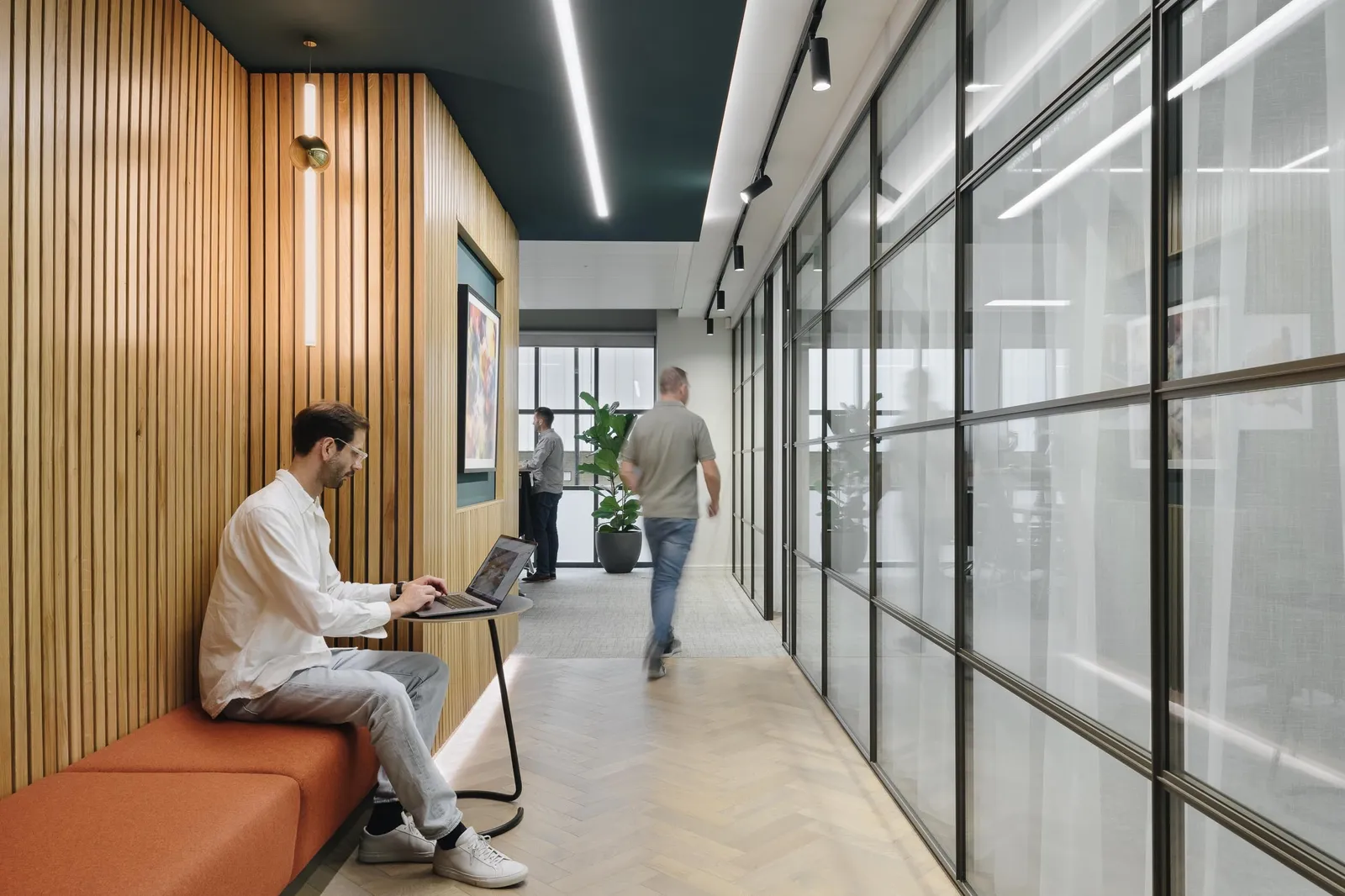A Guide to Better Air Quality in the Workplace
What’s inside our best practice guide to better air quality in the workplace?
It goes without saying that improving air quality in the workplace and inside commercial buildings has never been more important. However, since 2022’s National Clean Air Day, an update was made to the UK Building Regulations with a hyper-focus on improving ventilation and reducing indoor air pollutants, with the importance of this topic continuing to grow over time.
This is why we teamed up with workplace management consultancy, 360 Workplace, and AirRated, the global indoor air quality certification for the contents of a brand new guide: ‘Best practice design for better air quality in the workplace’. Bringing together experts from both organisations, our collaborative paper’s tailor-made for tenants looking to navigate this tricky process.
Can’t wait to see what's inside? No problem. Check out a sneak peek here.
What air-related questions to ask when searching for your space
When searching for the right building as part of your next office move, there are lots of things to consider when it comes to air quality in the workplace. To get off on the right foot, try asking the following questions:
- What is the Outdoor Air Quality [ODA] rating in the area?
- What is the ventilation rate and why’s it important?
- Is the building naturally or mechanically ventilated?
- How old is the current mechanical system?
- What are Air Handling Units and where should they be located?
- How many years do the Heating, Ventilation and Air Conditioning (HVAC) systems last and when should they be replaced?
But that’s the start. For more key questions and a breakdown of useful accreditations to look out for, download the full guide.

Scents, materials and other key considerations
Once just a staple of homes, air fresheners are growing in popularity inside commercial buildings. But from ingredients that aren’t hazardous to finding the right delivery mechanism, there's a lot to think about before applying this ‘experimental’ trend in the workplace.
And what about the materials you use inside your fit-out? Surprisingly, these can have an impact on the building’s air quality too. How many VOCs will they emit over time? Where’s the best place to go for detailed guidance around material selection? Get answers to all this and more inside our guide.
Knowing how your workplace air-quality measures up
At Area, we think it’s important to practice what we preach. That’s why we worked with AirRated to assess the air quality inside our workplace.
The assessment measured the following:
- PM2.5 - measuring the impact of particulate matter, otherwise known as fine dust.
- Temperature - levels above 1,000 ppm can cause headaches and drowsiness.
- CO2 - fluctuations in temperature can contribute to Sick Building Syndrome.
- Humidity - poor humidity has implications for the physical building and its occupants.
- TVOCs - total volatile organic compounds represent the entire pool of pollutants.
An ‘AirScore’ comprises these five fundamental parameters - assessed against a framework of industry best practices and international standards to meet mandatory minimum requirements in order to pass and become Certified.
We’re delighted to share the news that our new Windsor studio has achieved a ‘Gold’ AirScore, demonstrating our commitment to supporting an exceptional indoor environment.

So why get an AirScore?
Undertaking annual, voluntary assessments like this demonstrates a continued commitment to the comfort, health and productivity of your people. However, there are so many more benefits of getting certified with an AirScore from AirRated:
- Stand out from the crowd - you’ll become the best in class among your peers
- Enhance your marketing and PR collateral - a great look for your organisation externally and internal; particularly for those looking to join and work from inside the office
- Future-proof your workspace - global standards are sure to continually evolve, so get ahead early.
- Support ESG and sustainability commitments - promote and source products that create a sustainable and healthy space.
But this is only the beginning of what you can achieve.
Ready to learn more?
We go into much more detail about the best practices for air quality and design in the workplace in our latest guide: ‘Best practice design for better air quality in commercial buildings’.